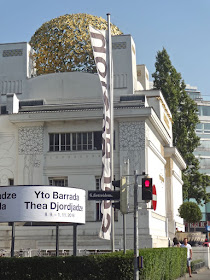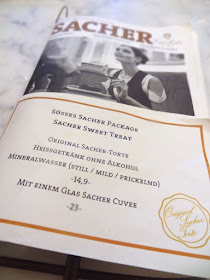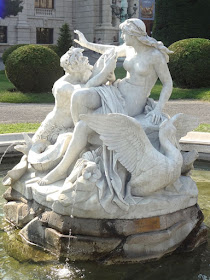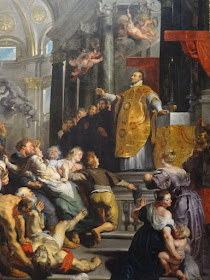As the seat of Austria's ruling Habsburg family for over 700 years, Vienna attracted the brightest creative minds from across the country, a rich legacy that's celebrated in its many fascinating museums, including the exquisite Kunsthistorisches Museum: Vienna's Museum of Art History, with one of the most important art collections in the world; The beautiful Belvedere Palace with works by Egon Schiele and the world's largest collection of Klimt's paintings; The Leopold Museum, home to a large collection of Austrian art dating from 1880 to WWI with the largest and most prominent collection with works of Egon Schiele worldwide; and the fabulous Secession Building with its breathtaking cupola of golden laurel leaves and stunning art deco facade, home to Gustav Klimt's famous Beethoven Frieze, which he created for an exhibition in 1902. Even by today's standards the Secession Buidling is a gorgeous building with its cupola of golden laurel leaves and its art deco facade, one of the pivotal works of Viennese Art Nouveaux architecture. Laurel leaf garlands decorate the facade and front, masks of the three gorgons preside over the entrance symbolizing the three art forms of architecture, sculpture and painting. Above the entrance the motto of the secessionist reads: 'Der Zeit hire Kunst. der Kunst hire Freiheit' — ‘To every age its art, to every art its freedom’.
Built in 1897 by Joseph Maria Olbrich, the Secession Building was designed for exhibitions of the Vienna Secession groups
Mosaic detail on topiary pot in front of Museum
Above the entrance the motto of the secessionist reads: 'Der Zeit hire Kunst. der Kunst hire Freiheit' — ‘To every age its art, to every art its freedom’
Klimt's Beethoven frieze is mounted around the perimeter of the Exhibition Hall
Meant for the exhibition only, the frieze was painted directly on the walls with light materials. After the exhibition the painting was preserved, although it did not go on display again until 1986.The Beethoven Frieze is on permanent display in the Vienna Secession Building in a specially built, climate controlled basement room. The frieze illustrates human desire for happiness in a suffering and tempestuous world in which one contends not only with external evil forces but also with internal weaknesses. The viewer follows this journey of discovery in a stunning visual and linear fashion. It begins gently with the floating female Genii searching the Earth but soon follows the dark, sinister-looking storm-wind giant, Typhoeus, his three Gorgon daughters and images representing sickness, madness, death, lust and wantonness above and to the right. Thence appears the knight in shining armour who offers hope due to his own ambition and sympathy for the pleading, suffering humans. The journey ends in the discovery of joy by means of the arts and contentment is represented in the close embrace of a kiss. Thus, the frieze expounds psychological human yearning, ultimately satisfied through individual and communal searching and the beauty of the arts coupled with love and companionship.
The frieze begins with floating female Genii searching the Earth...
...but soon follows the dark, sinister-looking storm-wind giant, Typhoeus, his three Gorgon daughters and images representing sickness, madness, death, lust and wantonness
The sinister-looking storm-wind giant Typhoeus
Partial frieze detail of the centre wall
Thence appears the knight in shining armour who offers hope due to his own ambition and sympathy for the pleading, suffering humans
The journey ends in the discovery of joy by means of the arts ...
...and contentment is represented in the close embrace of a kiss
Exterior of the museum from the side
Closeup detail of the leafy gold dome
The legendary Viennese Café Sacher, the quintessential Austrian café in the heart of Vienna
Café Sacher's menu
The elegant interior of the café with new carpeting that had just been installed the night before
The menu offers coffees and sweets in addition to savoury temptations
A hot and delicious Café Sacher cappuccino
Apple Strudel - warm, flaky and fabulous
Sachertorte is classic Austrian chocolate cake layered with apricot preserves
Next stop after fortified with cappuccino and strudel, the Leopold Museum in the Museum Quarter
The imposing modern exterior of The Leopold Museum
'Death and Life' by Gustav Klimt 1910/1911 - Oil on Canvas
Hiroshige woodcut 'Mannenbashi Bridge in Fukagawa' - colour woodcut on washi
Gustav Klimt Poster for the First Secession exhibition
Gustav Klimt, The Blind Man, 1896
Gustav Klimt with his cat, 1912
Egon Schiele Room at The Leopold
Egon Schiele, Self-Portrait with Lowered Head, 1912
Egon Schiele, Nude Study 1908
Egon Schiele, Edith Schiele with a Striped Dress, Sitting, 1915
Egon Schiele, 1918
Oskar Kokoschka 'Self Portrait - One Hand Touching Face', 1918
Oskar Kokoschka 'Pieta: Poster for the Summer Theatre, 1909
Oskar Kokoschka, 1975
Josef Hoffman 'Chess Table with Spherical Castors' - 1903
Hoffman chair design originals
Josef Hoffman
Vienna's Natural History Museum was designed at the same time as the Kunsthistorisches Museum, which stands directly opposite, and its 39 galleries form the country's most important natural history collection. Founded in 1765 by Francis I, the consort of Maria Theresa, its exhibits have been on show in the same building since 1889. Highlights are its vast collection of minerals, including many examples of materials used in Vienna's historic buildings, as well as rare emeralds and diamonds that once belonged to Empress Maria Theresa. Also of note is its Prehistory Department with relics and artifacts dating from the Stone Age to the Early Middle Ages, including the famous Venus of Willendorf.
The Natural History Museum with the Maria Theresa Monument in Maria Theresien Platz
The Kunsthistorisches Museum: Vienna's Museum of Art History
Fountain of Zeus with Leda and the Goose outside the Kunsthistorisches Museum
The impressive palace in which the Kunsthistorisches Museum Vienna is located was first opened in 1891 and primarily exhibits works of the Habsburg collection, and is considered one of the five most significant fine art museums in the world with collections of Egyptian, Greek and Roman Antiquities and a variety of sculptures and other decorative arts. The museum’s dazzling stairwell features 40 spandrel paintings and other works between arches and columns, 11 of which were created by Gustav Klimt. The decoration feature themes from the history of art ranging from the Egyptians to modernity. The frescoes are brilliant examples of Klimt’s artistic prowess and a magnificent insight into his unique style. Via the Swarovski Optics telescope, we were able to zoom in on the dazzling masterpieces in order to experience them in all their glory.
The palatial 19th-century Kunsthistorisches Museum houses one of the most important art collections in the world, and is certainly one of the most gob-smackingly beautiful!
The sumptuous interior features cornice details by Gustav Klimt and other Austrian luminaries
One of 11 paintings by Gustav Klimt tucked between the arches and columns of the Kunsthistorisches Museum
In 1890/91 the 28 year-old Klimt executed a number of paintings to decorate the spaces between the columns and above the arcades along the north wall of the museum’s main staircase
Unique masterpieces by Rubens, Rembrandt, Raphael, Vermeer, Velazquez, Titian and Durer,
as well as the world’s largest collection of works by Pieter Bruegel the elder,
make a visit to the Kunsthistorisches Museum an unforgettable experience
A student painting Pieter Bruegel the Elder's 'The Peasant and the Nest Robber'
on a large easel and box of paints with wheels for easy maneuverability
The Rubens Room
'The Miracles of St. Ignatius of Loyola' by Rubens, c. 1615
'The Art of Painting' by Johannes Vermeer, c.1666-67
'Mary with Child and Saints Rosa and Catherine' by Perugino, c 1493
The Café and Restaurant under the magnificent dome of the Kunsthistorische Museum
The marble bar
A tall cold beer in the most beautiful Museum Café in the world
Sacherwürstel mit senf, frisch gerissenem kren und kaisersemmel:
Sacher sausages with mustard, fresh horseradish and roll
The exterior of the Art Museum
Mozart Statue in Imperial Palace Park
The Imperial Palace Park - a tranquil place to relax after a day exploring
the extraordinary museums of Vienna






























































No comments:
Post a Comment